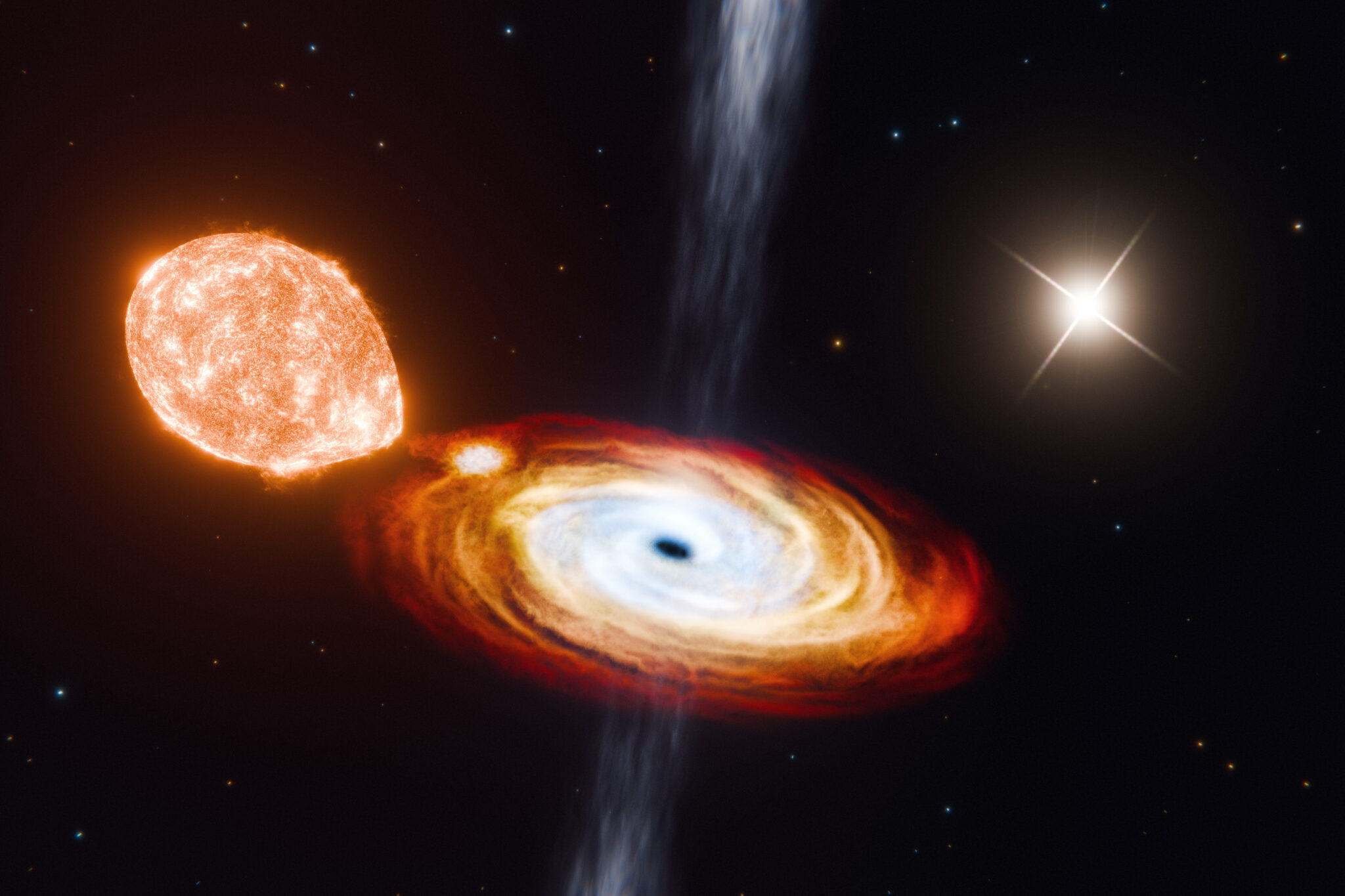6.11.2024

Sometimes, the best things come in threes.
The system V404 Cygni is an old favorite with astronomers. The binary contains a 9-solar-mass black hole that’s slurping gas from a star slightly less massive than the Sun. Astronomically speaking, only a hair’s breath separates the pair: 0.14 astronomical unit, or less than half Mercury’s average distance from the Sun. (This is normal for these kinds of systems.)
The hot gas swirling down onto the black hole creates an X-ray beacon. In fact, V404 Cygni was the first system of its kind — called a low-mass X-ray binary, or LMXB, where the “low mass” refers to the companion star — that astronomers agreed hosts a black hole.
But after decades of study, V404 Cygni has still given scientists a surprise.

Jorge Lugo
Even back in the early 1990s, astronomers noticed another star almost on top of the binary as seen from our perspective. Most researchers assumed the star was an interloper, its proximity to the binary an optical illusion.
But as Kevin Burdge (Massachusetts Institute of Technology) and others report October 23rd in Nature, this star is part of the V404 Cygni system, after all.
The team combined a suite of observations from ground- and space-based telescopes, determining that the star moves through space with the binary. The tertiary star is a shirttail relation, however: It lies more than 3,500 au from the inner binary, or roughly 90 times farther out than Pluto lies from the Sun. At such a great distance, the star ambles along in its orbit at only a few kilometers per second.
Furthermore, the star is reaching its golden years, transitioning away from hydrogen-core fusion en route to becoming an old, puffy red giant. Based on this information, the team deduces that the system is between 3 and 5 billion years old — similar in age to the solar system. The three objects seem to have been together from the get-go.
Far from a curiosity, the tertiary star may help astronomers clinch how low-mass X-ray binaries form in the first place.
LMXBs are hard to explain. Black holes are the remnants of massive stars, and as a massive star swells with age it should merge with a small companion, instead of doffing its own outer layers in such a way that leaves the small star unscathed.
In 2016, Smadar Naoz (University of California, Los Angeles) and her colleagues suggested that a third, distant companion star could solve the problem. In this scenario, the inner binary forms with the stars on a much wider orbit, separated by about 100 au, while the third orbits the pair roughly 10,000 au away. Over time, the gravitational interaction of the distant, third star with the inner binary has a sort of kneading effect on the inner binary’s orbit, changing the orbit’s tilt, then its elongation, in a cyclic pattern.
When the soon-to-be-a-black-hole star ages and starts losing its layers, the change in mass upsets equilibrium, causing the orbits to expand. The inner binary’s orbit expands much more than the tertiary’s orbit. This expansion ramps up the gravitational kneading effects, driving the inner binary to extreme elongations.
During the phases when the orbit is highly elongated, the star and black hole in the inner binary come close together, and the tidal forces stretch and squeeze the star, sapping energy from its motion. That, combined with other effects, leads the inner binary’s orbit to shrink dramatically.
The tertiary’s properties in V404 Cygni match what Naoz’s team predicted. “I’m very excited by this discovery,” she says. She’s now collaborating with Burdge to investigate the system’s history in more detail.
Curiously, the black hole seems to have had a quiet death. We normally think of massive stars’ deaths as messy, violent affairs, their haphazard explosions sending their remnants rocketing away from the site of demise. Astronomers have found plenty of neutron stars with such “kicks” to their velocity. But whether black holes also receive a kick during formation has remained unknown.
For V404 Cygni’s tertiary to still hang on to the inner binary, the black hole must have formed with little to no kick. The star might even have imploded without fanfare.
Quelle: Sky&Telescope
